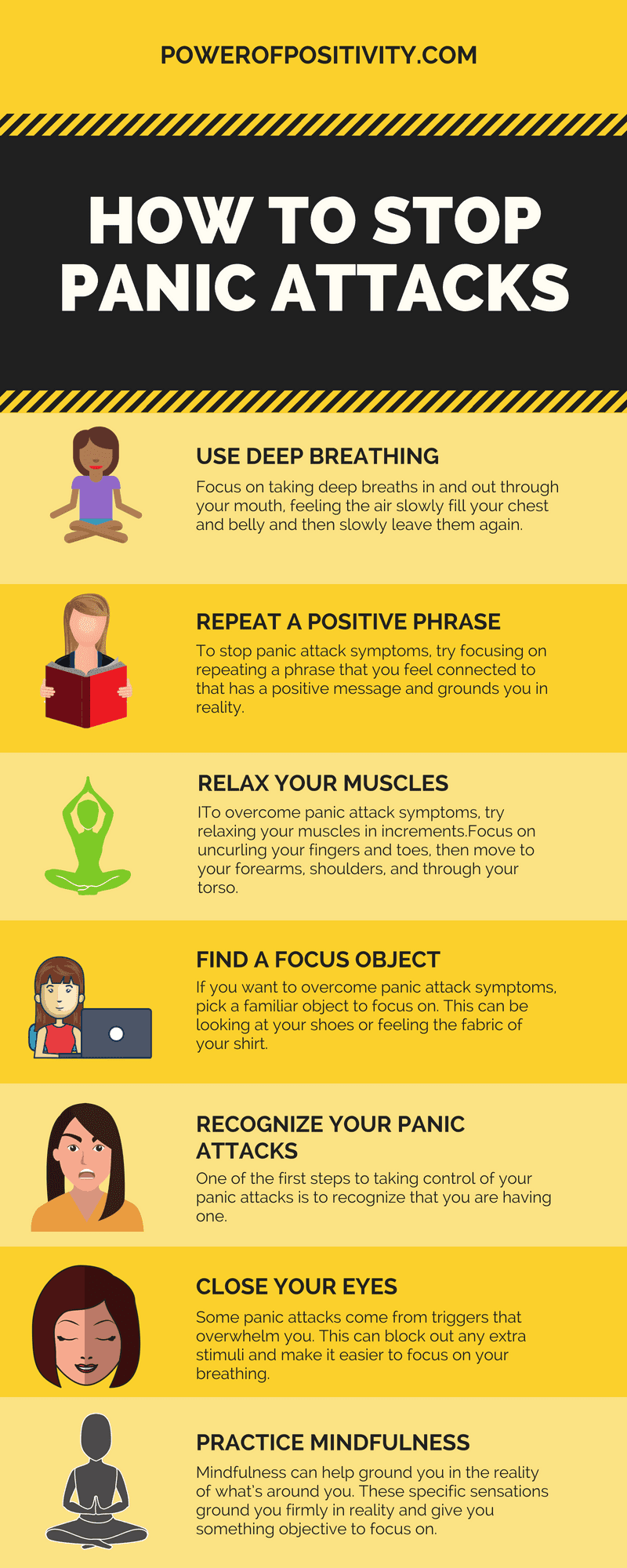The signs in your body can definitely be frightening when you think you might be having an anxiety attack. You have a sense that a major physiological change has happened in your body, but there doesn’t seem to be any obvious cause. It could be an anxiety disorder.
When you feel the symptoms of an anxiety attack, the response of your body is just that, a physiological reaction. Fear is a natural emotion to have when you are threatened. When we attribute the cause of the reaction to something that could cause us harm, it is a normal fear response.
The problem with an anxiety attack comes when there is no logical cause for the sensation of fear in the body. When there is no cause for the biological sensation of fear, it can be even more frightening than if there really were something to be afraid of.
When you have an anxiety attack, your body literally goes into what’s known as “fight or flight” mode. This happens because fear has historically been used as a signal that warns us of danger and motivates us to protect ourselves.”
7 Signs You May Be Having An Anxiety Attack
Signs of an anxiety attack usually last about ten minutes or less. Anxiety attacks can happen more than once and they can even happen during sleep. Repeated attacks or the fear of having another panic attack can be a sign of panic disorder.

1. Rapid heartbeat often signifies an anxiety disorder
A racing heart beat is commonly associated with signs that you may be experiencing an anxiety attack. Most people will feel this in their chest rather than by actually testing their heart rate via a pulse point.
2. Shortness of breath
Feeling like you are panting or taking rapid, shallow breaths can be associated with having an anxiety attack. You may feel a sensation of pressure on your chest or as if you cannot inhale your normal lung capacity.
If you notice these first two signs, remember these breathing practices that can relax anxiety immediately
3. Tight feeling in the stomach
A feeling of a ball or fist in the stomach is a sign of an anxiety attack. This tightness may feel deep, rather than muscular, as if your organs are tightening. The uncomfortable physical symptoms of a panic attack are biologically the same as what happens in an actual life threatening situation.
The body responds to a fear-provoking event by reducing the flow of blood to the stomach. This is so that more blood is available to activate the muscles in the event of the need to run or fight from the danger.
4. An anxiety disorder often causes dizziness, change in blood pressure, or tingling
The rush of blood that goes along with an anxiety attack is usually due to an increase in blood pressure. As a result, you may experience dizziness along with the attack. Some people experience this rush as a tingling sensation in arms, hands and fingers.
5. Feeling a loss of control
Feeling out of control is something that people with anxiety attacks have to deal with. Also, feeling out of control is something that you may have read about in our article 5 Things People With Anxiety Need You to Know.
6. Chills or sweating
Sweating on the palms of your hands, armpits or arms is a sign that you may be having a panic attack. When something happens that frightens you, your usual response is fight, flight or freeze.
Anxietycoach.com says ‘When you respond to panic as if it’s danger, by struggling against it, holding your breath, fleeing, and getting more upset, you will find that “the harder I try, the worse it gets”, because you are getting tricked into trying methods that will sabotage your hopes for recovery.’

7. Muscle tension reveals an anxiety disorder
Tightness in your neck and shoulders can also be a sign of having an anxiety attack.
People who experience a panic attack often end up at the emergency room thinking that they are having a heart attack. The anxiety of a panic attack may be undiagnosed for years before someone properly diagnoses it.
Even a single panic attack that happens outside of the home can lead a person to develop agoraphobia, or the fear of going outside the house. Now that you are aware of the signs of a panic attack, here are 7 ways to manage anxiety.
If this article about anxiety attack signs helped, please like and share so we can create more for you 🙂

















